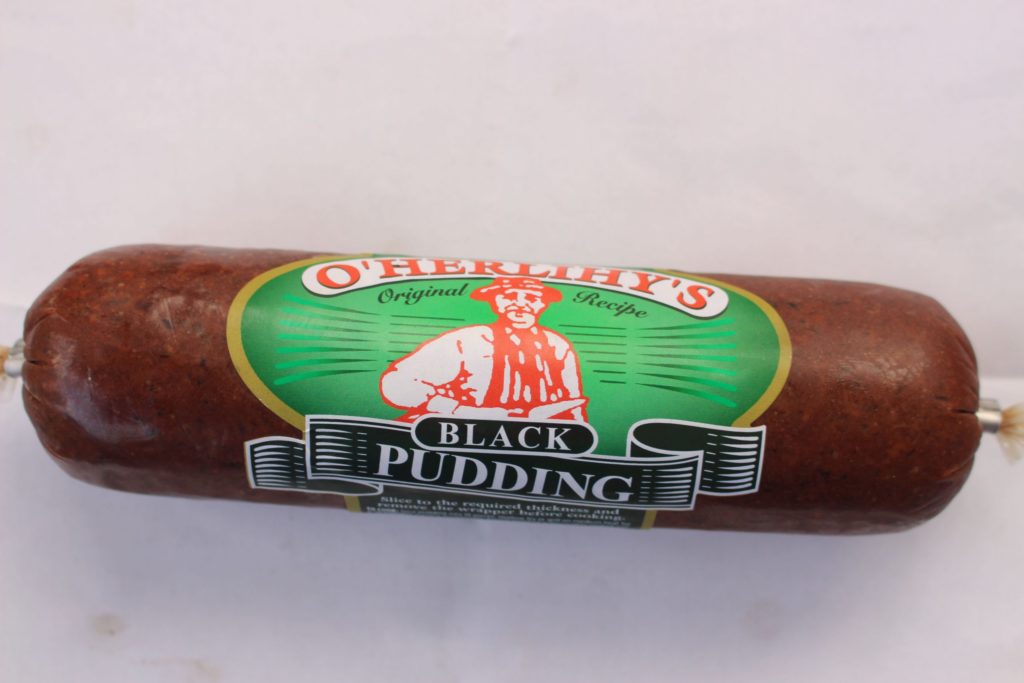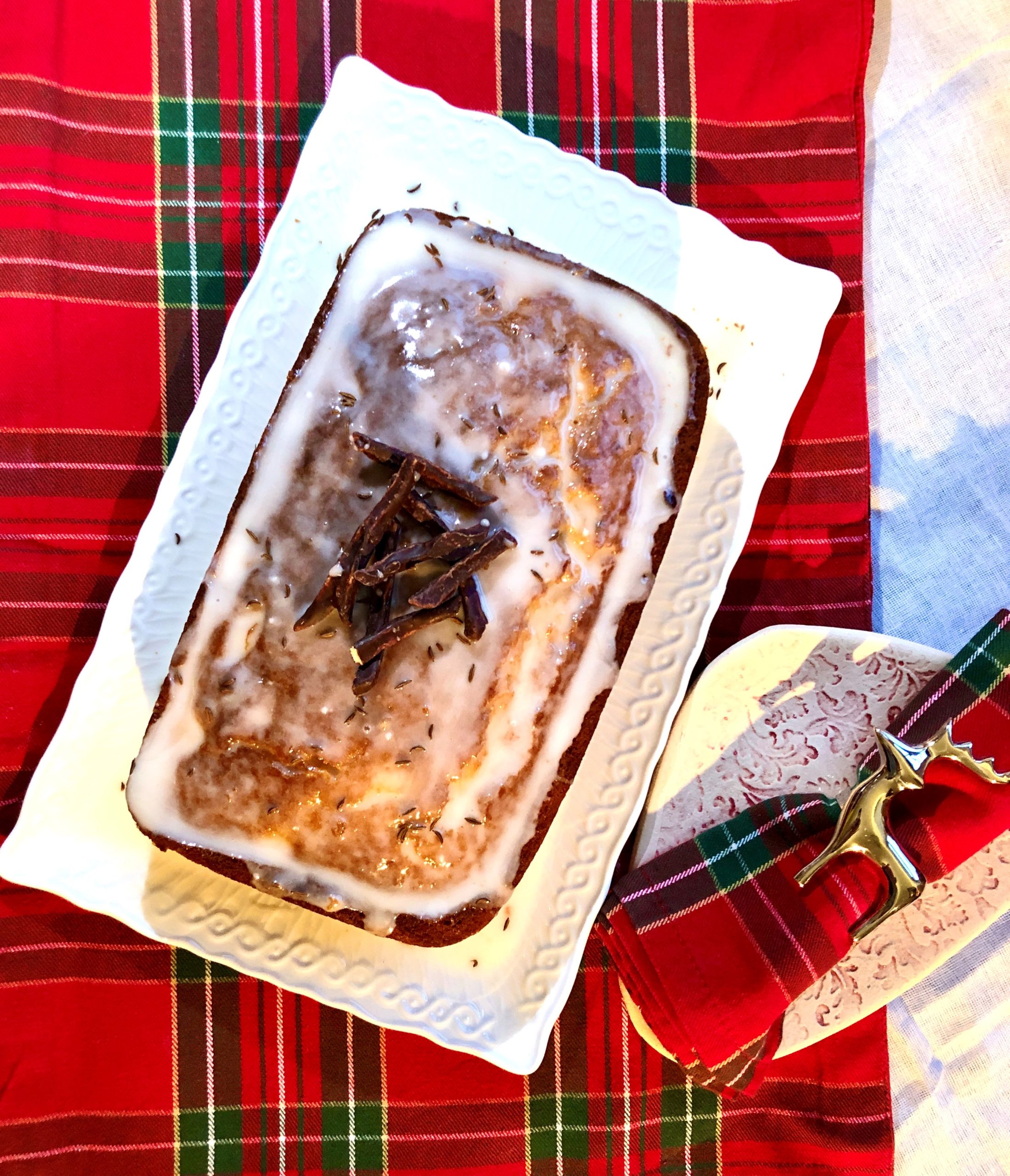Rich Black Pudding combined with Irish Black Butter was a mad experiment that turned out delicious. Good for snaffling down with a glass of festive porter. A proper canape!
Irish Black Butter isn’t butter at all, but an old Irish tradition that goes back hundreds of years to a time when Armagh was known as The Orchard of Ireland. It’s made of apples, a thick rich spiced conserve that is Ireland’s answer to quince jelly!

Irish Black Butter is made from Armagh Bramley Apples (an EU PGI protected variety of apple), cider, brandy and spices. It’s versatile, good as a savoury or sweet accompaniment with cheese and meats, as a glaze, spread on bread or even mixed into natural yogurt!
It’s a taste I find I need to get accustomed to, and because of that I often look at it in my fridge pleading with me to find something to do with it that I find tasty and interesting!
I received a #gifted box of traditional pork products from O’Herlihy’s in Ballincollig, a family business about to celebrate its 60th year in business in 2021. They do porky products that have a distinct nostalgic quality to them (their sandwich ham has a fabulous texture and taste you don’t often get in packed ham anymore, and they also do sliced corned beef the likes of which I haven’t seen since I was a kid!).

In amongst all the porkie goodies was a chub of their family recipe black pudding. Made from pork, oatmeal and a gentle peel of spices, its a little smoother than other black puddings that frequent this house, which happens to make it very good for molding!
So I had the idea to pair O’Herlihy’s Black Pudding from Co Cork with Irish Black Butter from Co Antrim and made these glorious little Black Pudding Truffles – an absolutely divine combination of flavours, you must try these!
There are a little fiddly to make, so take your time; and chilling the truffles well before crumbing and frying them is essential if you don’t want them to fall apart in the fryer! Do try them, you’ll be so surprised how good they are!

Ingredients
- 300g chub of O’Herlihy’s Black Pudding
- 3 tbsp of Irish Black Butter conserve
- Panko breadcrumbs
- Oil for frying
Method
- Into a bowl, crumble in the black pudding and gradually massage it into a softer, more malleable paste.
- Take about 1 tablespoon sized amount of the black pudding into your hands and gradually press and form into a ball. Repeat until finished.
- Take each ball and, forming a cup shape with one hand, press the ball out to create a small bowl shape. Turn and shape keeping the meat all together. Take the time to do this, thinning and lengthening the walls of the ‘cup’ to create a space to drop in the Black Butter paste.
- Using a spoon or a piping bag if you have one, put in about a 1/4 teaspoon of Black Butter into the dip.
- Then start to close the sides of the cup over the conserve to reform the black pudding into a ball again. Set aside and repeat until they are all done. It is a messy job!
- Chill the formed truffles in the fridge for at least 30 minutes.
- Heat the oil in a deep-sided saucepan pan or a deep fat fryer to a medium high heat. Coat the Black Pudding Truffles in panko breadcrumbs (or whatever breadcrumbs you have to hand) and drop carefully into the hot oil to quickly deep fry. When the breadcrumbs are golden brown, gently take them out of the oil and drain on a piece of kitchen paper.
Plate up and enjoy!






